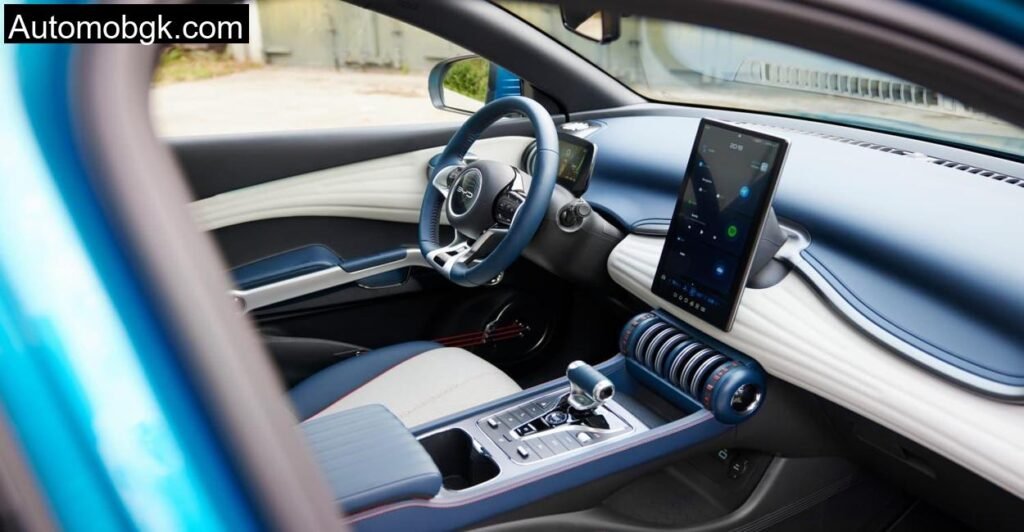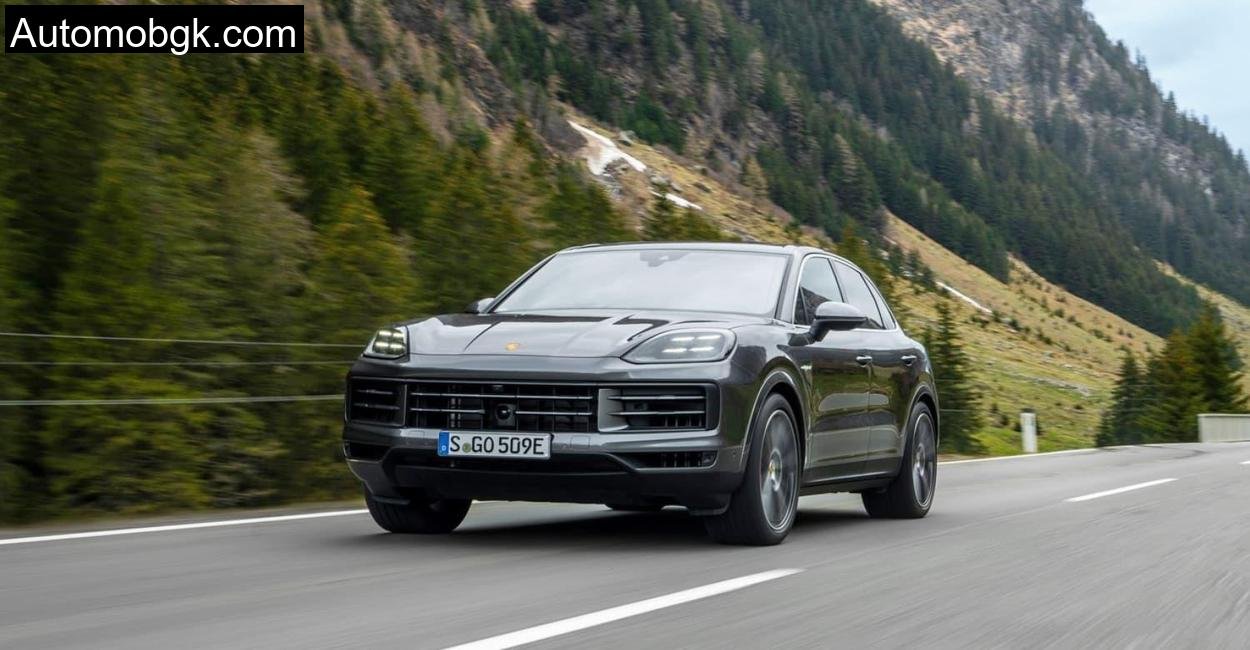Wingst, with its mix of open straights, tight country bends, and elevation shifts, became the stage for a day of deep diving into Chinese electric engineering, European expectations, and real-world EV performance. And the Atto 3? It turned heads, but more importantly, it made me think. This isn’t just another budget EV, this is BYD’s calculated leap into the European mainstream.
Who is BYD?
If you still think of BYD as a curious logo you saw during Euro 2024 commercials, you’re not alone. I was in that boat too, until I started digging.
BYD, which stands for Build Your Dreams, started in 1995 as a battery manufacturer in Shenzhen, China. Fast forward to today, and they’re the world’s second-largest EV maker, pushing out 1.6 million fully electric vehicles in 2023 alone. That’s not a footnote; it’s a declaration.
What sets BYD apart is vertical integration. This isn’t just a company that slaps batteries into someone else’s chassis. From semiconductors to software to their much-celebrated Blade Battery, BYD engineers the whole electric symphony in-house. That Blade Battery, by the way, is the same one they sell to Tesla, and now, it’s sitting under the floor of the Atto 3.
When BYD launched in Europe in 2022, they brought along the big names, Han, Tang, Seal, but the Atto 3 is their boots-on-the-ground compact SUV, built for the masses. It’s pitched directly against the VW ID.3, Hyundai Kona Electric, MG4, and even its own cousin, the Dolphin.
Atto 3 Design: Great on the Outside, Smart on the Inside
The first time I saw the Atto 3 roll into the Wingst forest path, I had to admit: it looked expensive. The silhouette is athletic but not aggressive, with a dragon-scale chrome flourish on the rear pillar, a wide stance, and a light bar that screams premium. No copycatting here, BYD has their own design language, and it works.
Step inside, and it gets quirky. In a good way.
It’s like someone gave a European interior designer an energy drink and a color wheel. You’ve got tri-tone synthetic leather seats, padded plastics with a sculpted feel, and then the bizarre: door bins strung with guitar strings, speakers that light up to your music’s beat, and air vents shaped like mechanical dials from a sci-fi flick.
It’s not bland. It’s bold. It’s as if the designers said, “Why not?” And you know what? It all kind of works. Especially once you’ve been driving it for a few hours and start playing air guitar on the doors at traffic lights.
The Atto Display is Rotatable

Ah yes, the party trick.
There I was, parked under a beech tree in Wingst, rain gently tapping the panoramic glass roof, when I decided to rotate the 15.5-inch center display. One click, and it flipped vertically like a tablet. Want navigation in full glory? Rotate it. Want a widescreen view while parked and streaming videos? Rotate it again.
It’s gimmicky at first, but then becomes second nature. The infotainment is sharp, responsive, and mercifully well-organized, unlike some other Chinese competitors. Voice control handled basic commands reliably, and although climate controls are tucked into submenus, once you get used to the layout, it’s manageable.
That said, I still longed for tactile dials for temperature and seat heating. There’s just something about reaching blindly for a physical knob that touchscreens can’t replicate, especially on a winding road.
BYD Atto 3: Good Space
I’m 1.83 meters tall. With the driver’s seat adjusted perfectly, I hopped into the rear seat, still had knee room to spare. That’s the magic of a dedicated EV platform. No transmission tunnel, no wasted space.
In Wingst, I picked up two friends for a short stretch toward Otterndorf. Up front, it was luxury-lounge comfortable. In the back, the roofline did pinch headroom slightly for taller passengers, but it wasn’t cramped.
With the seats up, you get 355 liters of boot space, plenty for groceries or a small luggage haul. Fold the seats down, and you get up to 1300 liters. Unfortunately, there’s no front trunk, so you’ll be stuffing your cables in the lower boot floor. Missed opportunity there, BYD.
349 km Range in the Test
Let’s talk real-world numbers. The Atto 3 has a WLTP range of 420 km, but in the cool, damp air of Wingst’s December woods, I averaged 19.7 kWh/100 km, giving me a real-world range of 349 km.
That’s impressive. It wasn’t a baby-foot driving day either, I tested full throttle overtakes, uphill pushes, and more than one sprint from 0-100 on deserted stretches.
Charging? The 60.5 kWh battery supports 11 kW AC charging, taking about 6 hours, and DC fast charging up to 88.6 kW, which gets you from 10% to 80% in roughly 46 minutes. Not blazing fast, but acceptable.
BYD Atto 3: Fun to Drive

Here’s where the Atto 3 surprised me most.
Despite weighing in at 1,772 kg, it feels peppy. The 150 kW (204 hp) motor with 310 Nm of torque gives you a jolt off the line, and mid-range performance (60–100 km/h) is where this thing shines. Overtaking tractors on Wingst’s single-lane roads? Effortless.
I clocked 0–100 km/h in under 8 seconds, and 80–120 km/h in 5.9 seconds, which gives you confidence on country roads and highways alike.
The only downside? Push hard in corners, and you feel the body roll. The suspension is soft, built for comfort, not aggression. Steering is light but not vague, and traction control sometimes struggles to contain torque when flooring it, especially on wet tarmac.
Still, when cruising between Wingst’s forest shadows, with the heater humming and stereo alive with late-autumn playlists, the Atto 3 just felt right. Calm, capable, and, yes, fun.
Technical Specification
| Category | BYD Atto 3 Specification |
| Motor Power | 150 kW (204 hp) |
| Torque | 310 Nm |
| Drive Type | Front-wheel drive |
| Battery Capacity (Gross) | 60.5 kWh |
| Charging (AC) | 11 kW (approx. 6 hours) |
| Charging (DC Fast) | Max 88.6 kW (10–80% in 46 min) |
| Range (WLTP) | 420 km |
| Range (Tested) | 349 km |
| 0–100 km/h | ~8.0 seconds |
| Top Speed | 160 km/h (limited) |
| Length | 4,455 mm |
| Boot Space | 355 L (1300 L with seats down) |
| Curb Weight | 1,772 kg |
| Price (Germany) | From €37,990 |
| Screen Size | 12.8″ or 15.5″ (rotatable) |
Conclusion
The BYD Atto 3 isn’t just “the electric Volkswagen from China.” It’s a fully realized EV, engineered with purpose, designed with character, and executed with surprising finesse.
In Wingst, across rain-soaked backroads and open clearings, I saw this car for what it is: a confident new player that can challenge Europe’s EV elites. Sure, it’s not perfect, there’s no frunk, the infotainment could use a few physical buttons, and high-speed DC charging could be quicker.
But for €37,990, you’re getting a quirky, well-equipped, solidly built EV that’s fun to drive and genuinely usable every day.
BYD isn’t playing catch-up. They’re leading in places Europe hasn’t even looked yet.
Is the BYD Atto 3 worth buying over a VW ID.3 or MG4?
Absolutely, if you value unique design, strong real-world range, and a bold interior. It’s priced competitively and delivers better torque and battery tech than many rivals.
How reliable is the BYD Atto 3’s Blade Battery technology?
Extremely. It’s used by Tesla for good reason. It’s safer, resists thermal runaway, and degrades more slowly than traditional lithium-ion packs.
Is the Atto 3 good for long trips?
It’s capable of moderate road trips, but the relatively slow DC charging (10–80% in 46 min) and 349 km real-world range mean it’s better suited for regional journeys than cross-country marathons.







